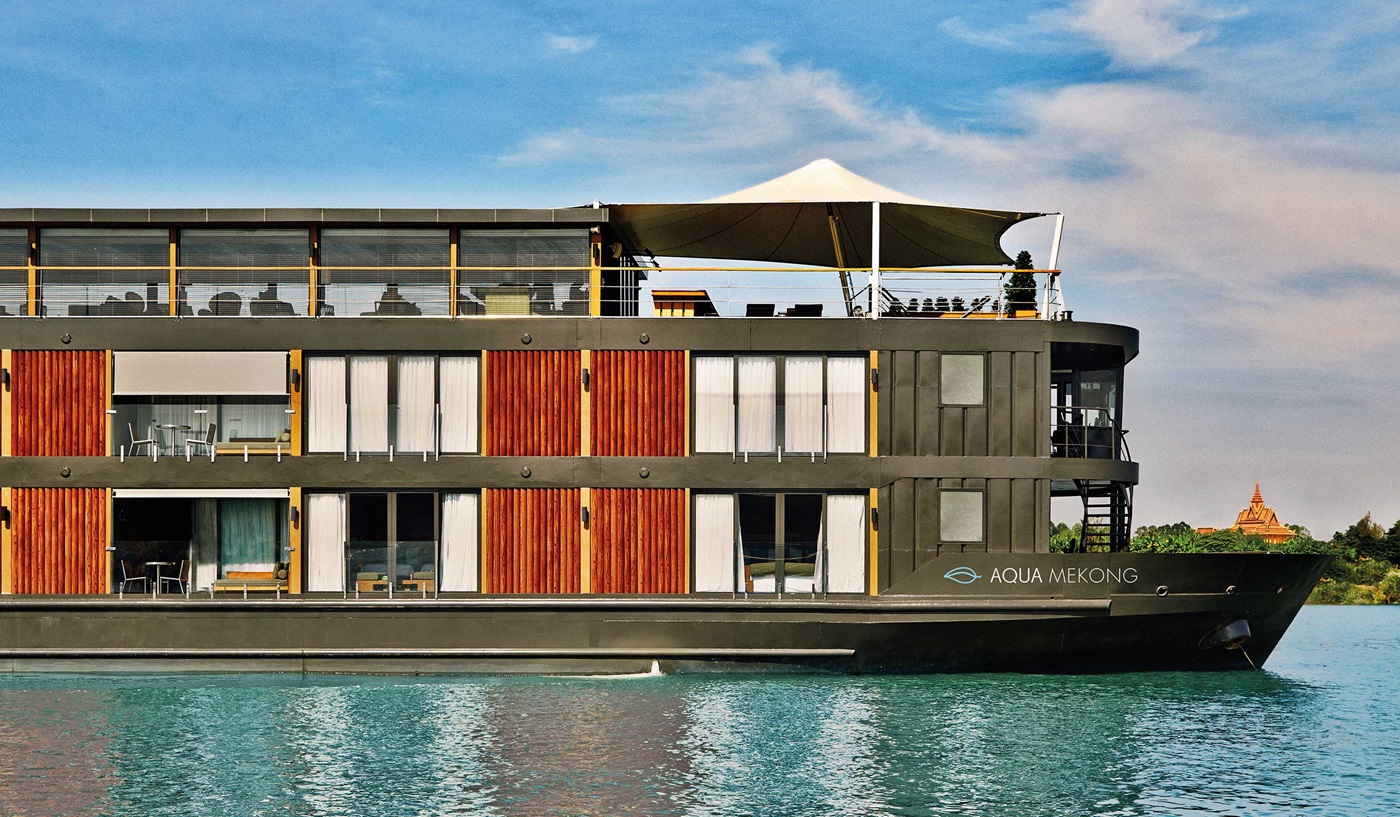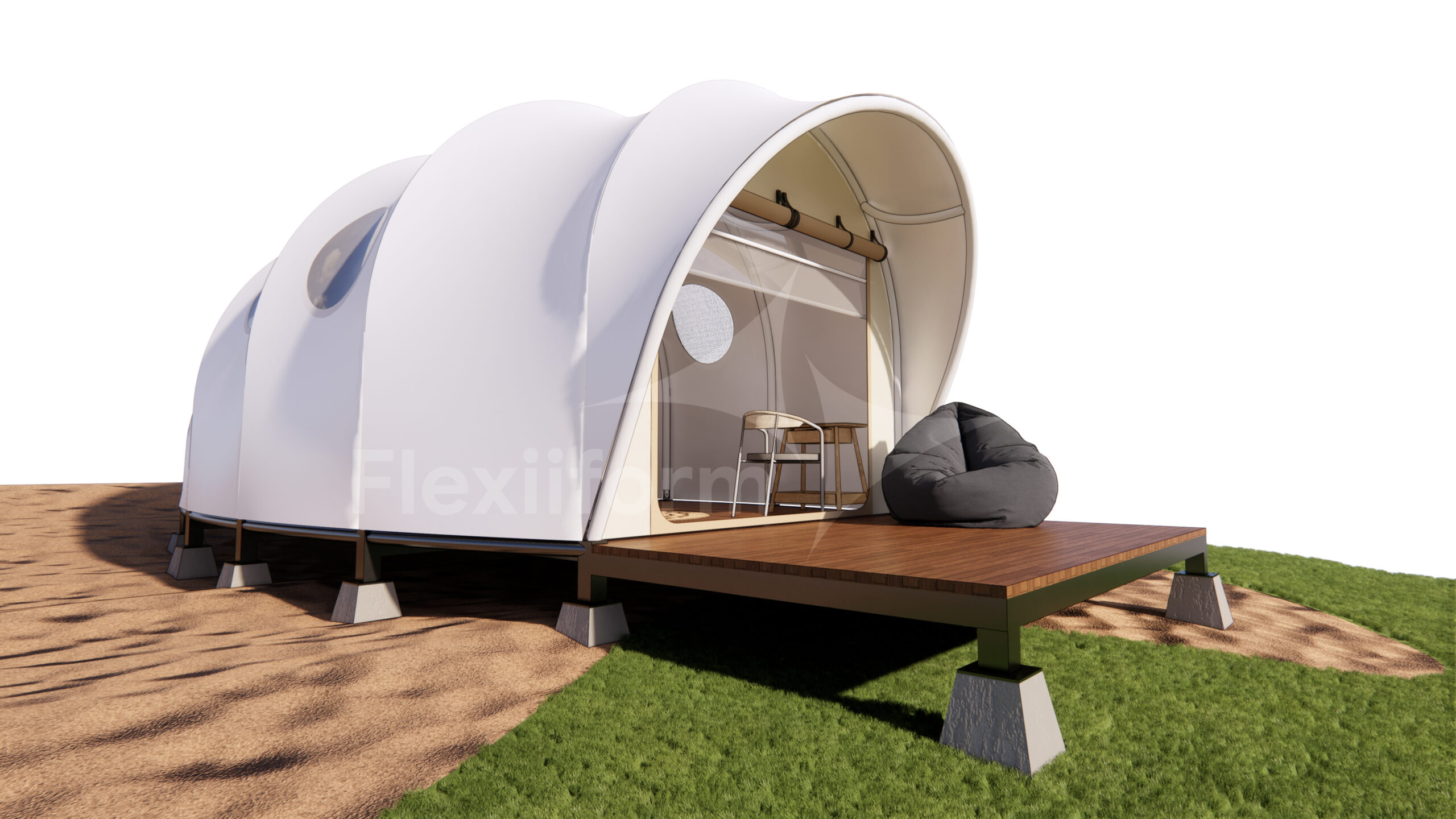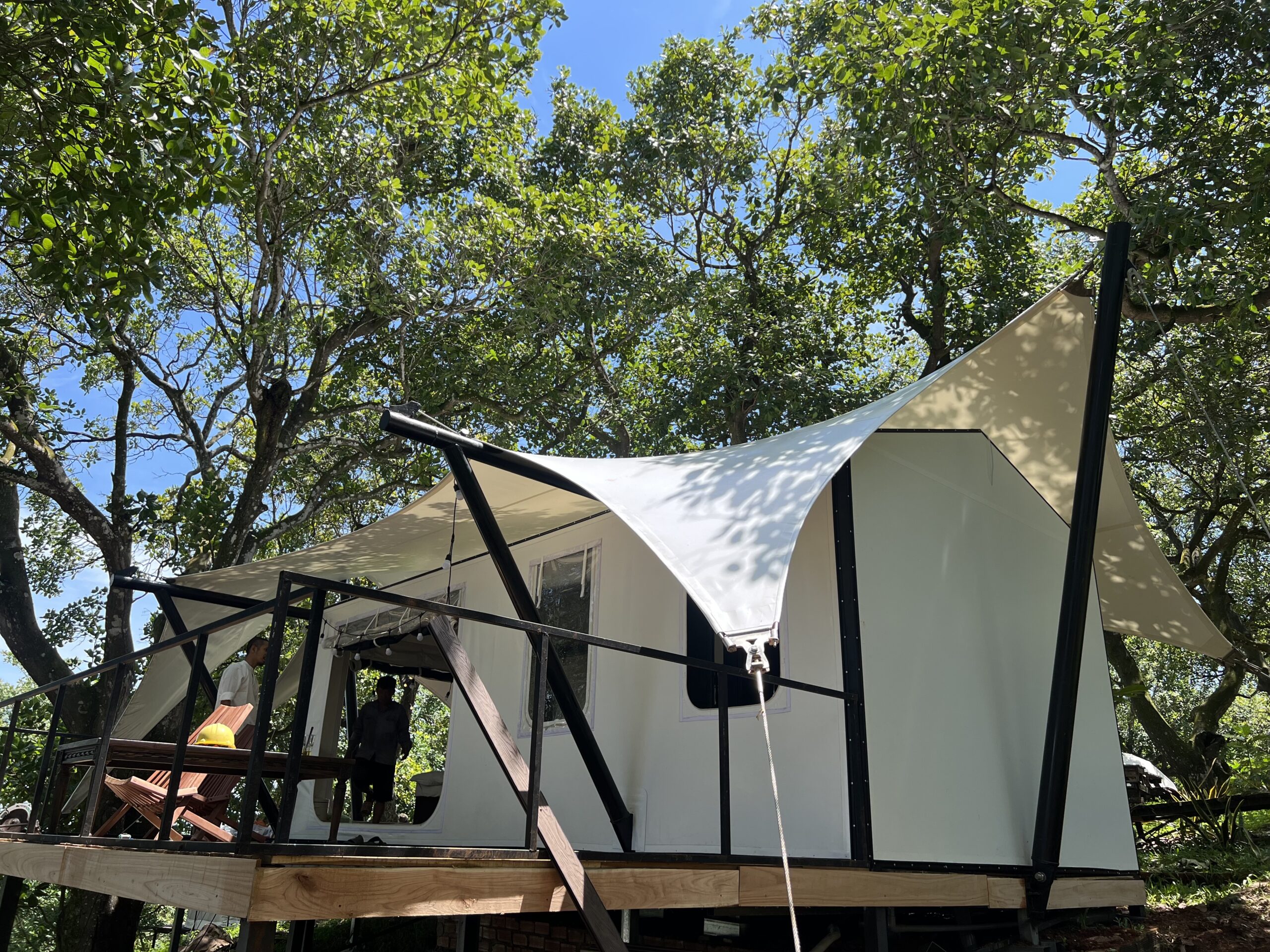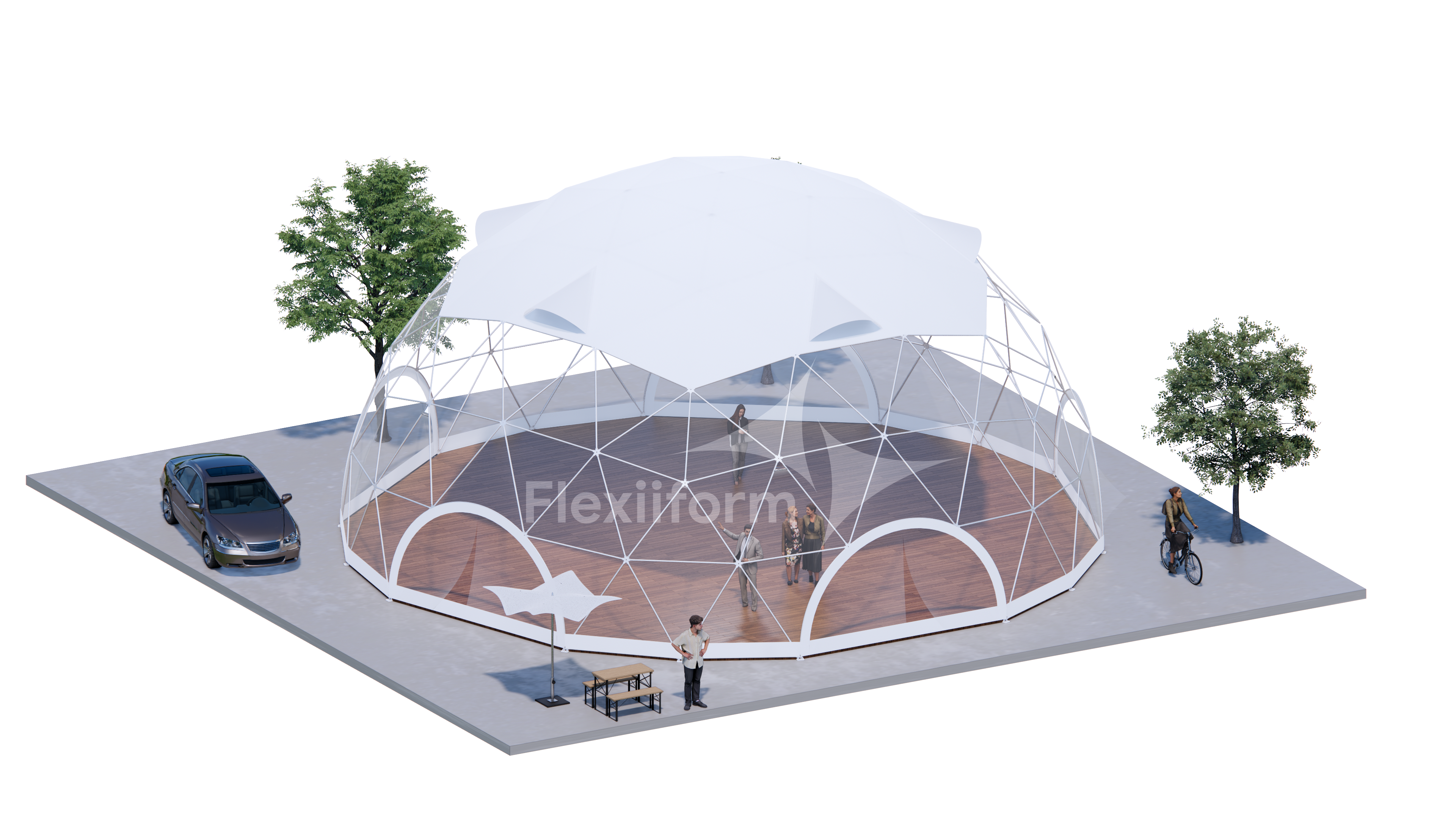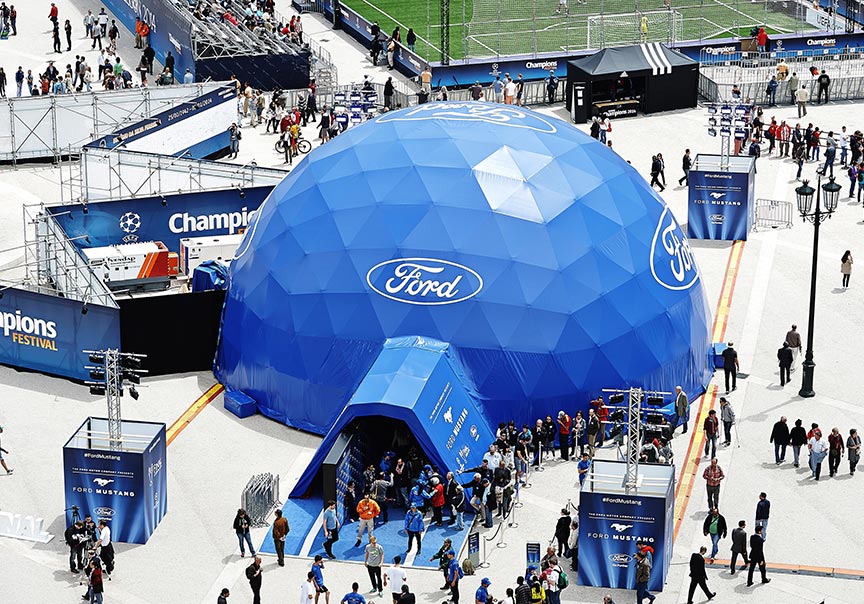Current Situation and Solution: Design and Construction of Reverse Umbrella Canopy – Optimizing Drainage and Architectural Aesthetics
The inverted umbrella canopy (funnel canopy) is a form of conical canopy but has the opposite structure and shape of the roof, with the top facing down. The canopy structure is an upgraded form of the sail canopy (hypar), taking advantage of the tension of the reinforced canvas stretched by the edge points (edge) and a point in the center (peak) at a certain height. The inverted umbrella canopy brings an impressive look, creating a unique highlight for the project, especially in areas such as skylights, courtyards in shopping centers, walkways, parks. This special canopy shape helps architects calculate and arrange drainage more proactively and effectively than traditional conical canopy.
—
Technical Requirements Analysis & Solution Context
Modern buildings often seek roofing solutions that not only provide protection from the sun and rain, but also have unique aesthetics and the ability to optimize space. Especially in large areas such as courtyards and parks, effective rainwater control and drainage is a challenge. Traditional roofing can have problems with water stagnation or are limited in flexibility, not creating architectural highlights. The need is for a roofing solution that is impressive in shape, lightweight, durable, easy to install, and has the ability to withstand high loads in harsh weather conditions, while ensuring accurate and safe drainage calculations.
—
Technical Solutions
Inverted umbrella canopy is a basic form of over-span structure, suitable for all types of buildings and areas, thanks to the variety of materials and advanced design principles.
Materials used for the inverted canopy
The inverted umbrella canopy can be suitable for all types of architectural canvas materials. In which, the two popular materials often used are PVC coated Polyester (PVDF) or Poly tetra Fluoro Ethylene (PTFE) coated glass canvas.
- Polyester (PVDF): A versatile, recyclable fabric, it is an excellent choice for permanent, temporary or permanent roofing structures. Tensile structures often use PVC-coated polyester for its strength, flexibility, transparency and lifespan of up to 20 years. Mesh (with small gaps between the interwoven fibers) is also used for pool covers or interior/exterior sunshades, allowing light to pass through.
- PTFE Glass Fabric: This is a durable material with a lifespan of over 30 years, making it the perfect choice for complex, large-scale tensile membrane structures. PTFE can withstand the harshest environments without fading or becoming brittle over time. The material is completely chemically inert, resistant to moisture and microorganisms. The outer Teflon coating is self-cleaning when it rains, and the PTFE canvas is actively bleached by ultraviolet light, providing a lasting bright white appearance.
Depending on the purpose and usage requirements, the architect will consider and choose the most suitable material for the project.
Issues to note when designing an inverted umbrella canopy
The inverted umbrella canopy has a simple, lightweight structure, helping to minimize the load-bearing structures and increase the usable space. However, to ensure a safe, high-quality and high-standard canopy system, the design and construction process of this type of canopy requires special attention. The inverted umbrella canopy has a higher geometric difficulty than other types of canopy, so the design process must be carefully calculated with high precision to avoid wrinkles during the tarpaulin stretching process, especially at the top position. This position is ideal for arranging rainwater drainage, so it needs to be treated in detail to prevent water from stagnating when connecting to the load-bearing structural frame. To optimize the shielding ability, the shape of the roof must be customized depending on the influence of the current situation (existing buildings, trees, etc.), the height of the inverted umbrella canopy is also carefully considered to meet the rainwater drainage. The load-bearing frame system can utilize the structure of existing buildings such as concrete beams or columns to minimize material costs for the roof load-bearing structure.
Projects for inverted umbrella roofs for reference
Inverted umbrella awnings are suitable for all types of buildings and areas. This tensioned canvas awning system can meet both functional and aesthetic needs for a variety of uses. Often applied to canopies, corridors, walkways, restaurant areas, facades of commercial centers, hospitals, schools. Typical examples are Inverted umbrella canopy at SkySong ASU.
—
Results and Performance Evaluation
The application of inverted umbrella awnings brings outstanding efficiency in optimizing space and architectural aesthetics. The special shape of the awning not only creates a unique highlight, attracting the eye, but also provides an active and effective drainage solution, minimizing the risk of water stagnation. Light weight, the ability to minimize load-bearing structures and increase usable space are outstanding advantages. Compatibility with many types of high-grade tensile fabric materials such as PVDF and PTFE ensures durability, resistance to harsh weather, and long service life (up to 20-30 years or more). Flexibility in design, combined with self-cleaning properties and reduced maintenance costs, makes inverted umbrella awnings an economical and sustainable solution for modern buildings, from skylights, courtyards, to large public areas.
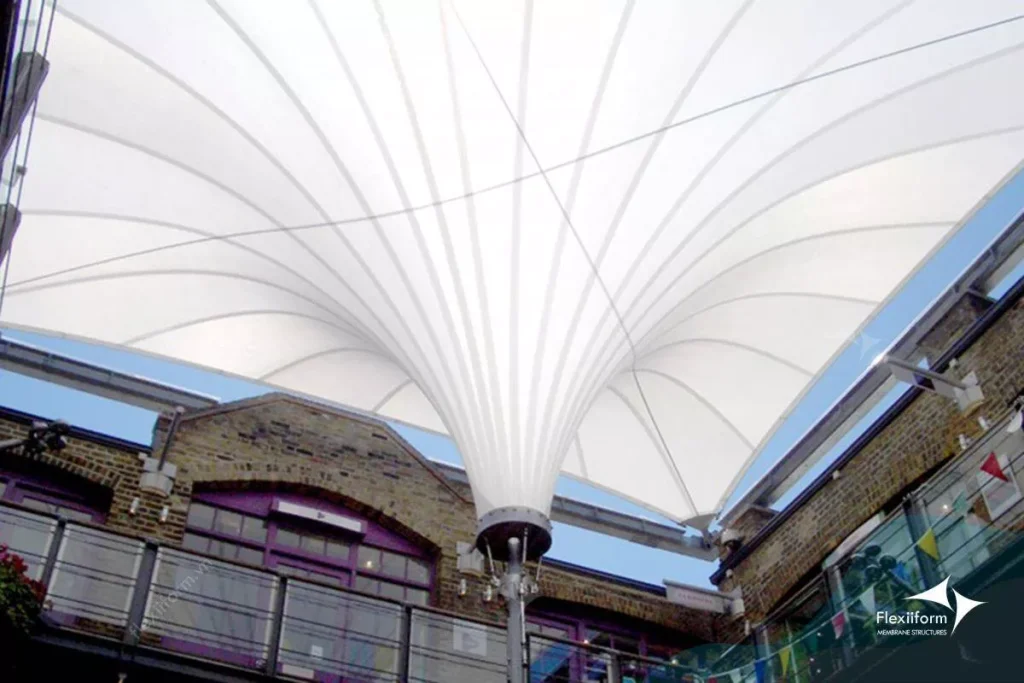
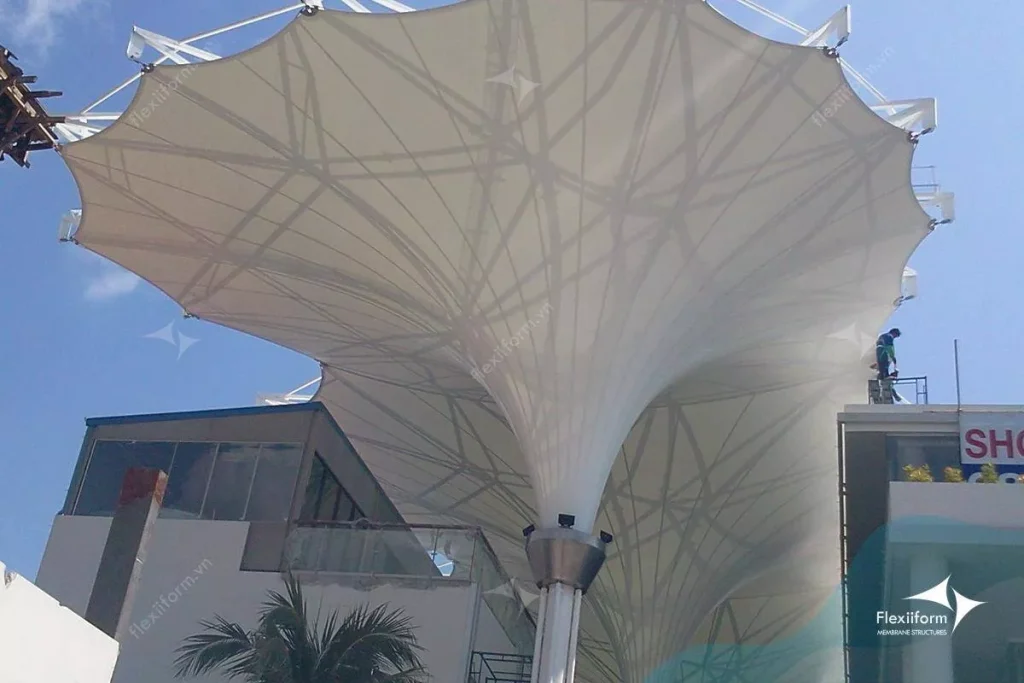
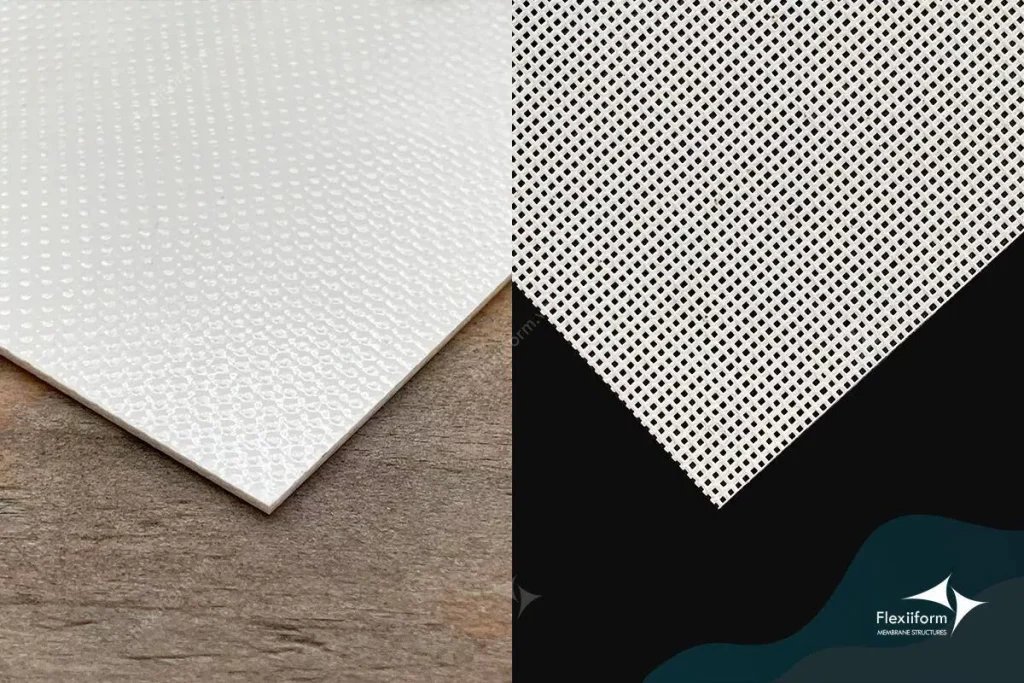

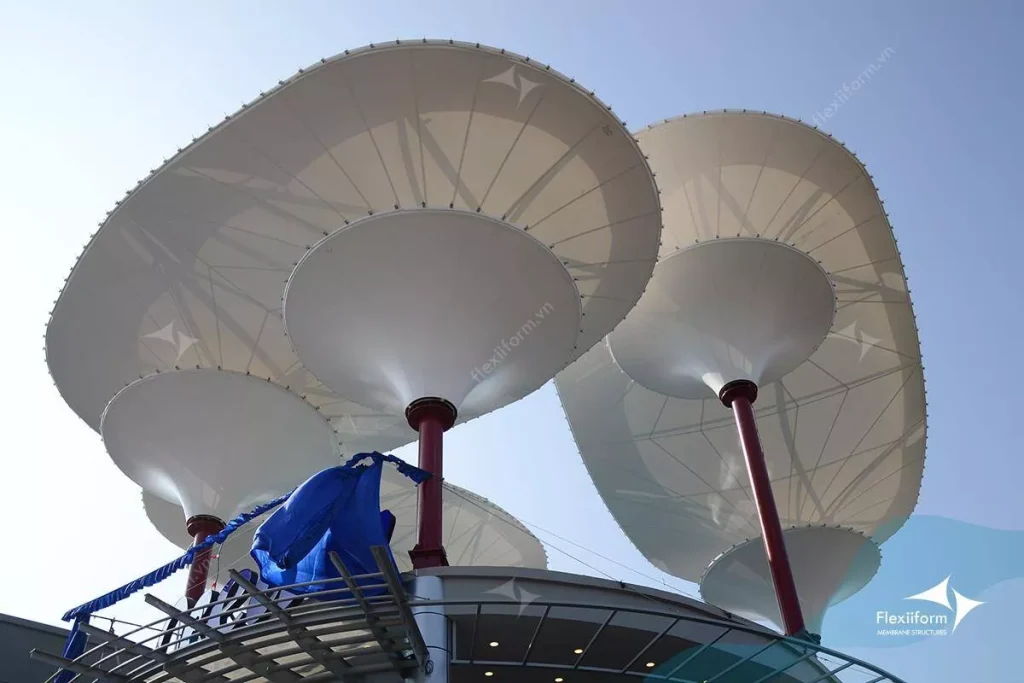
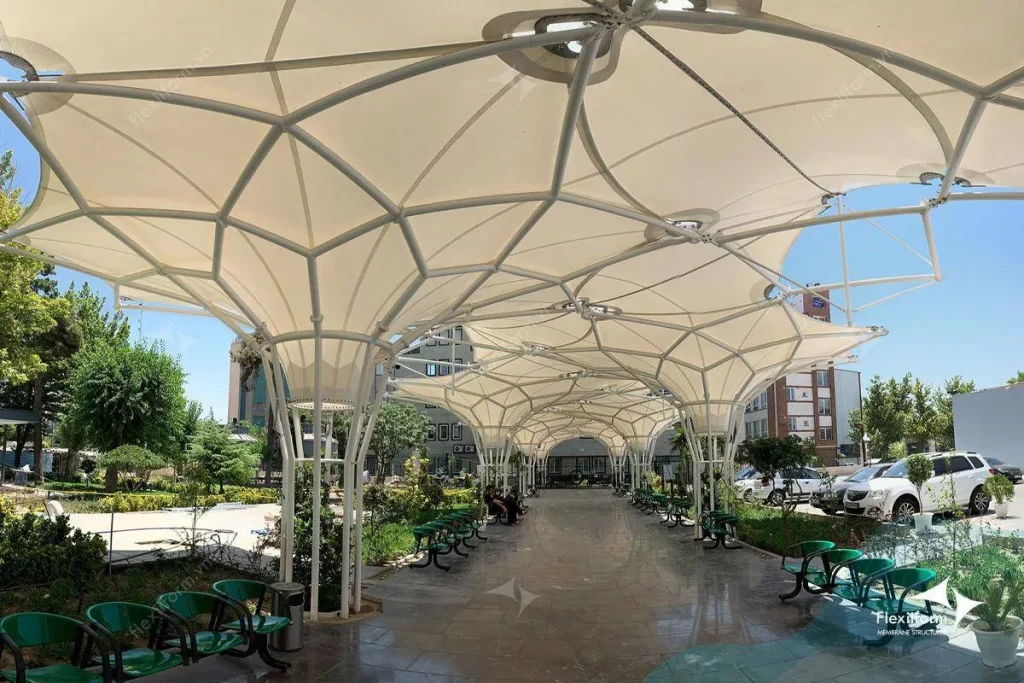
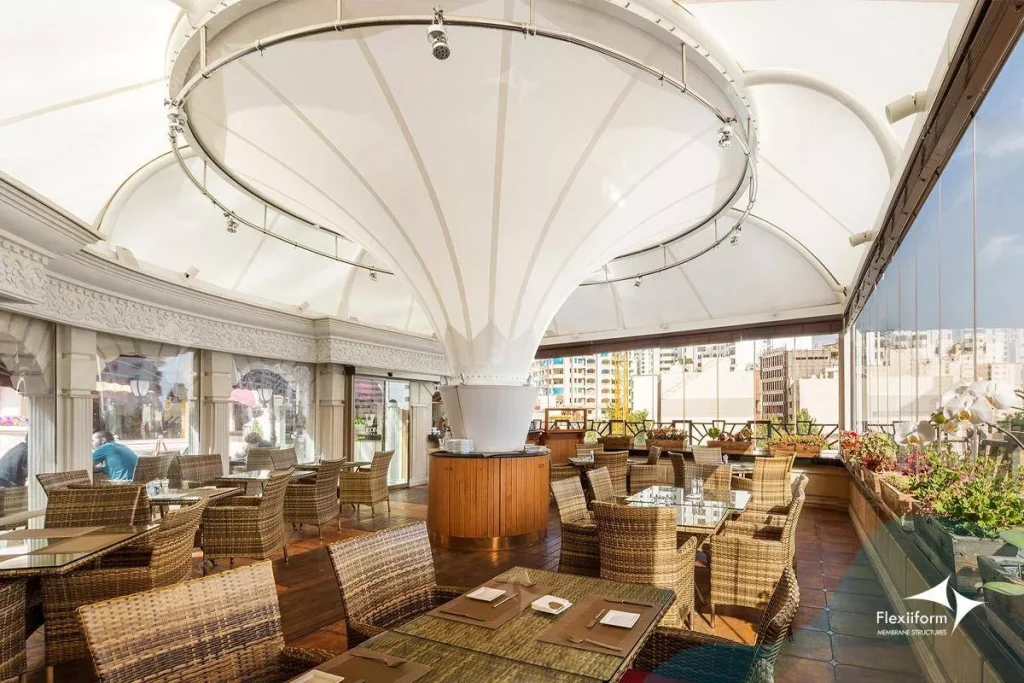
—
Contact Technical Consulting
Flexiiform is a professional Tensile Fabric design and construction company in Vietnam. With a team of well-trained and skilled Architects and Engineers, we are proud to be the only unit in Vietnam to receive professional advice from FasTech Company – The leading company in designing and constructing tensioned canvas structures in Thailand, with nearly 30 years of prestige and experience in the industry and successfully implementing more than 1,000 tensioned canvas projects in Thailand and Southeast Asia.
With the strength of creative ideas in tensile fabric architectural design, along with practical construction methods, Flexiiform is confident to bring the most optimal solutions for each specific project, especially projects related to tensile fabric cover structures and inverted umbrella roofs.
For expert advice on inverted umbrella solutions or to request a detailed quote, please contact us. You can read more related videos.
Contact information:
Company: Flexiiform
Phone: +84 8678 68830
Website: https://flexiiform.vn/
Fanpage: https://www.facebook.com/flexiiform/


